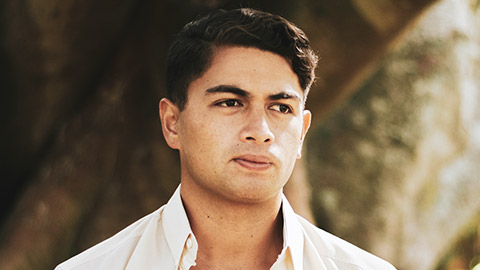Over the duration of this programme you have been introduced to a number of ideas and principles regarding working effectively and in culturally sensitive and appropriate ways with Māori youth. This topic will draw heavily on those ideas and principles. You are encouraged to take some time to refresh your understanding of them by re-visiting the topics on Te Tiriti o Waitangi, kaupapa Māori approaches to youth work practice, and working in partnership with Māori.
Youth development programmes and workers should create activities utilising a kaupapa Māori framework and the values of aroha, whanaungatanga, whakapapa, mana, manaaki, kōrero, awhi and tikanga. These values have been discussed previously in this programme but as a way of reviewing them it is suggested you take a look at the resources and information available on the E Tū Whānau website. You will find some inspiring stories of positive change that the work of E Tū Whānau has supported.
In this topic you will continue to learn about the principles and skills for working safely and effectively with rangatahi Māori.
Mooney (2012) conducted a study that “explored Māori social workers’ perceptions of working to establish rapport with rangatahi Māori in community mental health settings”1. Rapport can be defined as a “close and harmonious relationship in which the people or groups concerned understand each other's feelings or ideas and communicate well”2. Building trust and rapport with rangatahi Māori is essential as it strengthens the faith they have in you and mitigates against whakamā (which is seen to decrease as more rapport is built). To establish rapport, it is asserted that a youth worker should not expect rangatahi Māori to disclose or share deeply personal information about themselves without first developing trust and mutual understanding. This is important to keep in mind. Being able to talk frankly about personal issues is a koha, a gift to you, and should not be expected immediately. As a youth worker, it’s imperative to build up trust through whakawhanaungatanga (building and strengthening relationships). Invest in your relationships with rangatahi Māori by working alongside them and doing things as they want to. If time is not taken to establish rapport, then it is likely that the young person will end contact with their youth worker prematurely, be dissatisfied with the service, and increase their reluctance to engage with support services again. For rangatahi Māori, trust and whakawhanaungatanga is critical, especially as they are statistically at higher risk of experiencing more complex issues and challenges.
It is important to note that while Mooney’s research was undertaken with social workers who identified as Māori, the ideas and principles advanced are relevant to all youth workers, regardless of their ethnicity, who work with rangatahi Māori. For non-Māori youth workers in particular there can be a tendency to hold the view that there is a single cultural reality for all Māori, whereas the reality is actually very diverse. Understanding this diversity is vital in the establishment of rapport. The ethic of whakawhanaungatanga is not limited just to Māori. Building trust and rapport is critical to the success of any relationship.
Note: whakamā is a psychosocial/behavioural concept in te ao Māori that lacks an exact equivalent in English. Shyness, embarrassment, and withdrawal are words that describe some aspects of whakamā.

How to establish rapport
Rapport is more likely to be successfully established when a ‘non-blaming’ approach is taken, when the relationship is clearly defined, and when openness and honesty are present alongside empathy, warmth and compassion. Humour also has a place. Here, we take a strengths-based approach, rather than focusing on perceived failings and limitations of rangatahi Māori. Ruwhiu and Ruwhiu (cited in Mooney 2012) explain that although the use of ‘self disclosure’ is a contentious issue in social work and youth work contexts, when it is used ethically it can support the development of rapport. Self-disclosure in such contexts involves the intentional sharing of personal information by the youth worker, including thoughts and beliefs. It is information that a client would not necessarily find out as a matter of course throughout the contact. Mooney (2012, p.5) asserts that an aspect of this is “having knowledge of one’s own whakapapa (ancestral links). The sharing of this can help [rangatahi] to feel more comfortable and settled because of the connections that can be made. In the Māori world the communication of whakapapa is a cultural norm. It is is the beginning of whakawhanaungatanga, the process of establishing and actively developing relationships.”1
It is wise to keep in mind that Māori are a diverse people. Not all Māori know their whakapapa. This in no way diminishes their Māori connections or the importance of whakapapa, these rangatahi have merely had different experiences with people outside of their ancestral links. It then becomes important to empahsise other important aspects of their lives. Ask questions designed to invite their stories: who are their role models? what stories do they have to tell that others might relate to? Rangatahi stories may be filled with all kinds of successes, challenges, failures, recoveries, and relationships with peers and other significant people. They may discuss experiences of connecting or struggling to connect with their history and whakapapa, they may have experienced discrimination, and they may share stories about places of significance that may not fit into a standard mihimihi or pepeha (often used in formal self-introductions). They may have had experiences of racism at school and on the street, unjustified engagement with police, or being followed in the supermarket. What’s important is that their experiences are likely to be shared or understood by many Māori.
It is essential to start developing some competence and confidence with the use of Māori tools of engagement including karakia, basic phrases in te reo Māori, whakatauki and whakatauakī (proverbs and sayings) and pūkōrero (speeches and oratory) relational to the language ability of the rangatahi you are working with. Remember that those who struggle to identify their whakapapa may also be unable to speak Māori due to a demonstrated history of colonial oppression. Therefore, even though these Māori tools of engagement are “vehicles to cultural and spiritual practice framework that in turn allows for deeper relationships to form” (Ruwhiu and Ruwhiu 2005, cited in Mooney 2012, p.51), they may not be appropriate in all situations. Take the time to learn about the background of the young people you are working with, and be careful not to alienate them with the use of advanced te reo Māori or by asking them to recite their whakapapa if they haven’t had the opportunity to learn these things. In summary, one must recognise that the levels of cultural understanding held by each rangatahi will differ.
Keeping the above discussion in mind, the processes described here can still contribute to a growing sense of positive cultural identity, which is synonymous with positive wellbeing and development. For non-Māori youth workers, it can be a challenge, but supporting rangatahi to access opportunities to learn more and develop a positive cultural identity is likely to have beneficial impacts on the working relationship, if this is handled appropriately.
Task: Learning from Māori social workers’ experiences
For a deeper understanding we suggest you take some time to read Hannah Mooney’s article on Māori social work views and practices of rapport building with rangatahi Maori.1 Mooney interviewed six Māori social workers in different parts of Aotearoa New Zealand to learn about their experiences of building effective working relationships with rangatahi Māori.
Rapport alone is not sufficient for positive youth development. There needs to be a clear focus for change and development that is guided by a kaupapa (purpose), clear tikanga, and the use of matauranga Māori in practice. Some further strategies for working with rangatahi Māori are outlined in the next section of this topic.
The following strategies offer a way to start working effectively in partnership with rangatahi Māori. Youth workers need to develop a wide repertoire of skills and process for working with diverse populations. To support one’s practice one should engage in opportunities for self-reflection and development through supervision, have access to appropriate cultural supervision, and develop networks with cultural allies in the community for support and assistance.

Rangatahi as valued members of society
“It is through engaging rangatahi as valued members of society, as Māori, as youth, and ultimately as taonga” that rapport can be built (Mooney 2012, p. 61). The Ara Taiohi Code of Ethics views this as an essential and integral part of youth work practice. Youth workers must develop skills and practices for affirming the value of rangatahi and demonstrating this in their day-to-day practice.
All young people are taonga, and equally so rangatahi Māori. In many situations they may not have been treated as such, so language and mindset must be reframed to thinking and saying to them ‘you are a taonga, and you are wanted.’ A way of demonstrating this value is to give rangatahi a voice and a role in the creation and application of their programmes and activities. This has been discussed in previous topics so it would pay to revisit some of the relevant previous content on youth leadership and youth participation covered in this course.
Kawa and tikanga
Following a clear kaupapa in the working relationship is vital. This is guided by the application of appropriate kawa and tikanga. Every hapū (kinship group or subtribe) have their own specific tikanga. As youth workers you must make every effort to find this out, and not work from the position of viewing the tikanga and kawa you may already know from the area you work in as a singular reality for all Māori.
As already outlined, there will also be Māori youth who do not know who their iwi or hapū are due to generations prior being displaced from homelands and/or being drawn to urban areas for work. The Manukau Urban Māori Authority (MUMA) is an example of a pan-tribal organisation that supports Māori living in South Auckland. Formed in 1986, this organization advocates for the rights of urban Māori and provides programs that help Māori thrive in their urban environment through whānau success.3 The Manukau based urban body is also represented through the National Urban Māori Authority (NUMA) and has affiliates throughout Aotearoa New Zealand.4 These examples are provided as encouragement to do some research alongside the young people you work with, to find out what the options are in your local area for rangatahi Māori to receive support based on their cultural identity (even if they aren’t sure which tribal or hapū-based organisations they should contact).
Involve whānau
Develop and maintain connections with whānau, hapū and iwi. Even though a young person may have been referred to your service or organisation because their parents or other immediate family members are a source of distress, and may not have their best interests in mind, best practice guidelines outlined by Oranga Tamariki and the Ministry of Health assert that when working with children and young people, working relationships need to be established with whānau and hapū. Ask for additional phone numbers and contact details for the wider whānau. There is likely to be others within the whānau who will have the young individual’s best interests at heart and will be supportive and stay connected. It is a key element in connection to a positive cultural identity. The importance of whanaungatanga and whakapapa in contributing to a sense of belonging, security and identity has been well established.

The use of cultural practices
Inviting participation from youth who are already fluent in te reo to support group facilitation can help increase self-determination and establish trust among the group. As mentioned above, remember to take an inclusive approach that welcomes in all rangatahi Māori regardless of their level of cultural knowledge and ability in te reo Māori. Find out what they might like to learn and bring in speakers or cultural experts who can guide all members of the group in this process. Make a commitment to learning alongside them (if you have not had much exposure yourself to tikanga and te reo). The benefits of developing your own confidence and competence around specific cultural practices cannot be emphasised enough. Learning and developing the correct pronunciation and use of te reo Māori can be a lifelong endeavour that will bring many new opportunities within and outside your workplace. Even with limited ability to kōrero Māori, one can learn and participate in karakia, waiata and many other aspects of te ao Māori (Māori worlds and cultural spaces).
This topic draws greatly on your previous learning. Finding ways to integrate all the learning into your own way of working effectively with rangatahi Māori is needed. In the next section you will some examples of programmes and activities that address the needs of Māori youth which you will find helpful for your understanding.
In this section you will find some links to organisations that provided kaupapa Māori services. You are encouraged to take some time to explore these websites to gain an appreciation and understanding of the types of activities and practices that are used.
- Te Ohomai Rangatahi is a rangatahi-centred and whānau-inclusive service for rangatahi who have been part of the justice system. It is delivered under the umbrella of PARS (People at Risk Solutions). You will also find some rangatahi stories of their experiences.5
- Maataa Waka Ki Te Tau Ihu Trust is a Marlborough-based initiative that provides mentoring, counselling, youth justice and other services for rangatahi, along with a range of other services for whānau and the community.6
- Te Ora Hou is a faith-based organisation in Ōtautahi/Christchurch providing a range of services and programmes for rangatahi.7
- Te Wānanga Mau Taiaha o Mokoia is a long running programme in Rotorua that runs training camps for rangatahi centred around traditional Māori martial arts skills, along with understanding tikanga and kawa.8
- For an example of the programmes funded by Oranga Tamariki read Working with Iwi and Māori – A Snapshot.9
- This last resource is an explanatory overview of Kaupapa Māori programmes in youth offending contexts.10
These organisations and services are just an example of the wide range of support available for rangatahi Māori. They may receive funding from Te Puni Kōkiri, Oranga Tamariki, the Ministry of Youth Development, or other government departments to provide these programmes.
You have now completed this topic on working with rangatahi Māori. Look at the instructions for Task 3 in Assessment 4.4, 4.5 again and continue to build on your notes and ideas from last week.
Your tutor should provide you with the necessary resources to successfully complete the aromatawai (assessment). If you feel need additional resources have a conversation with your tutor to discuss this further.
Kei runga noa atu! You are now ready to move on to the next topic.

